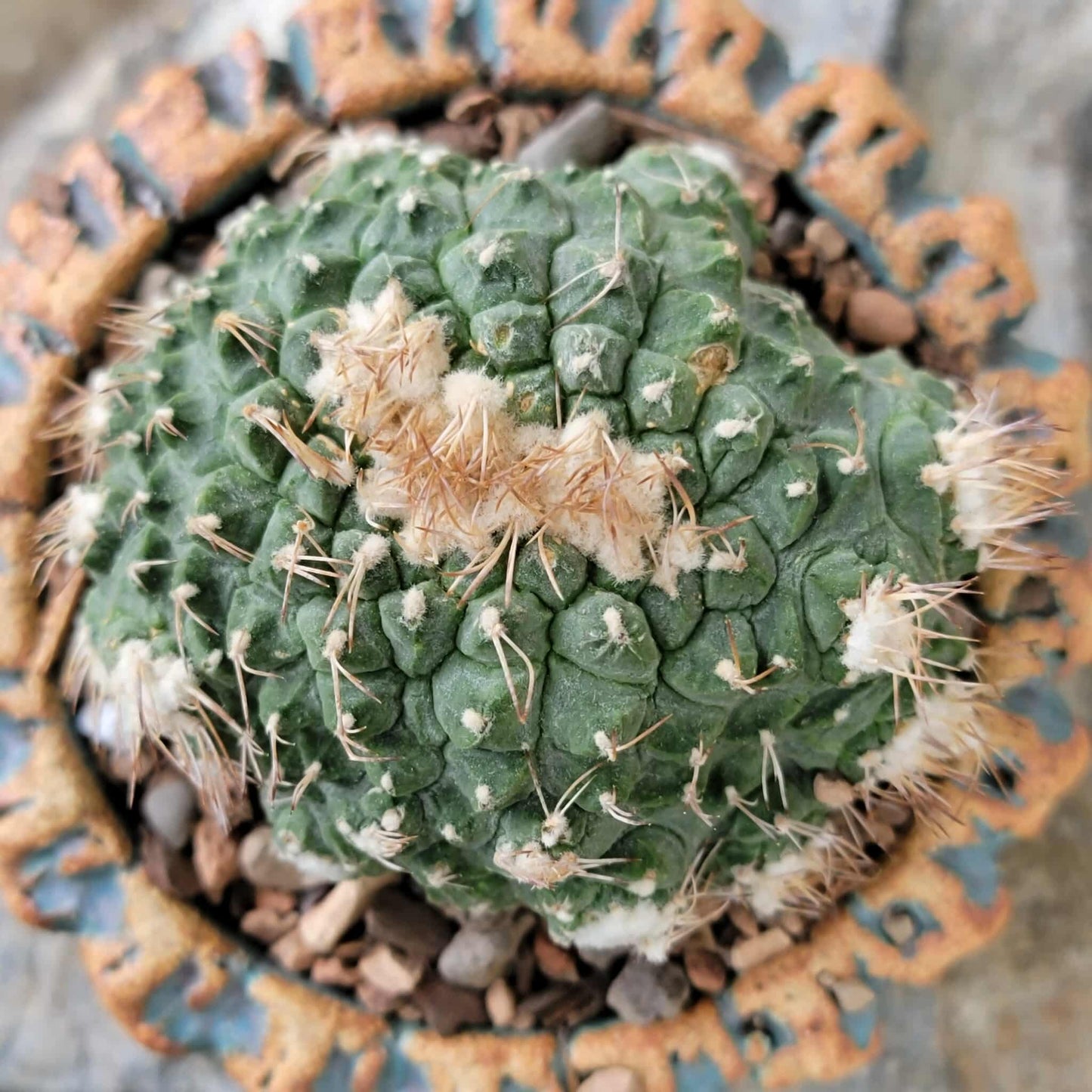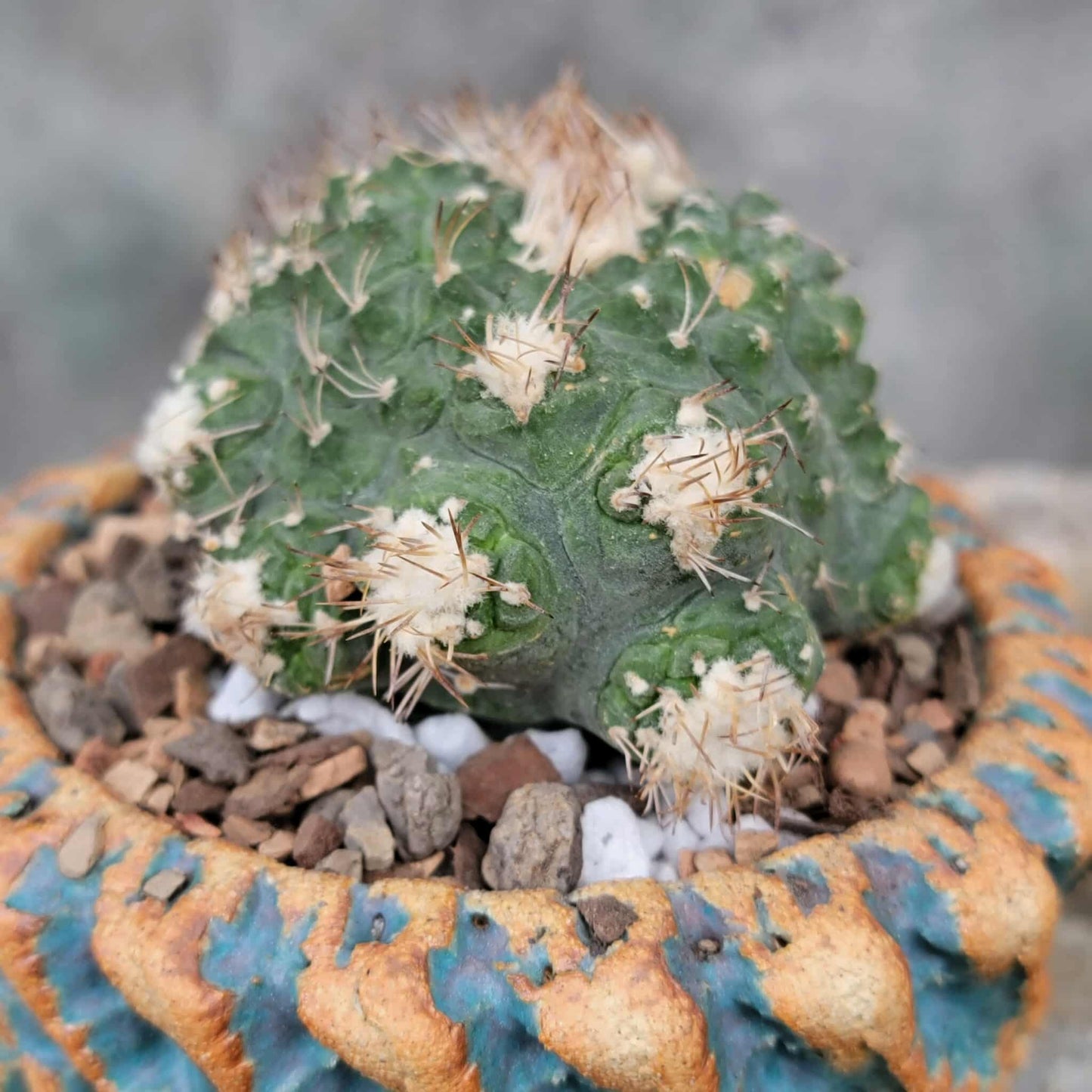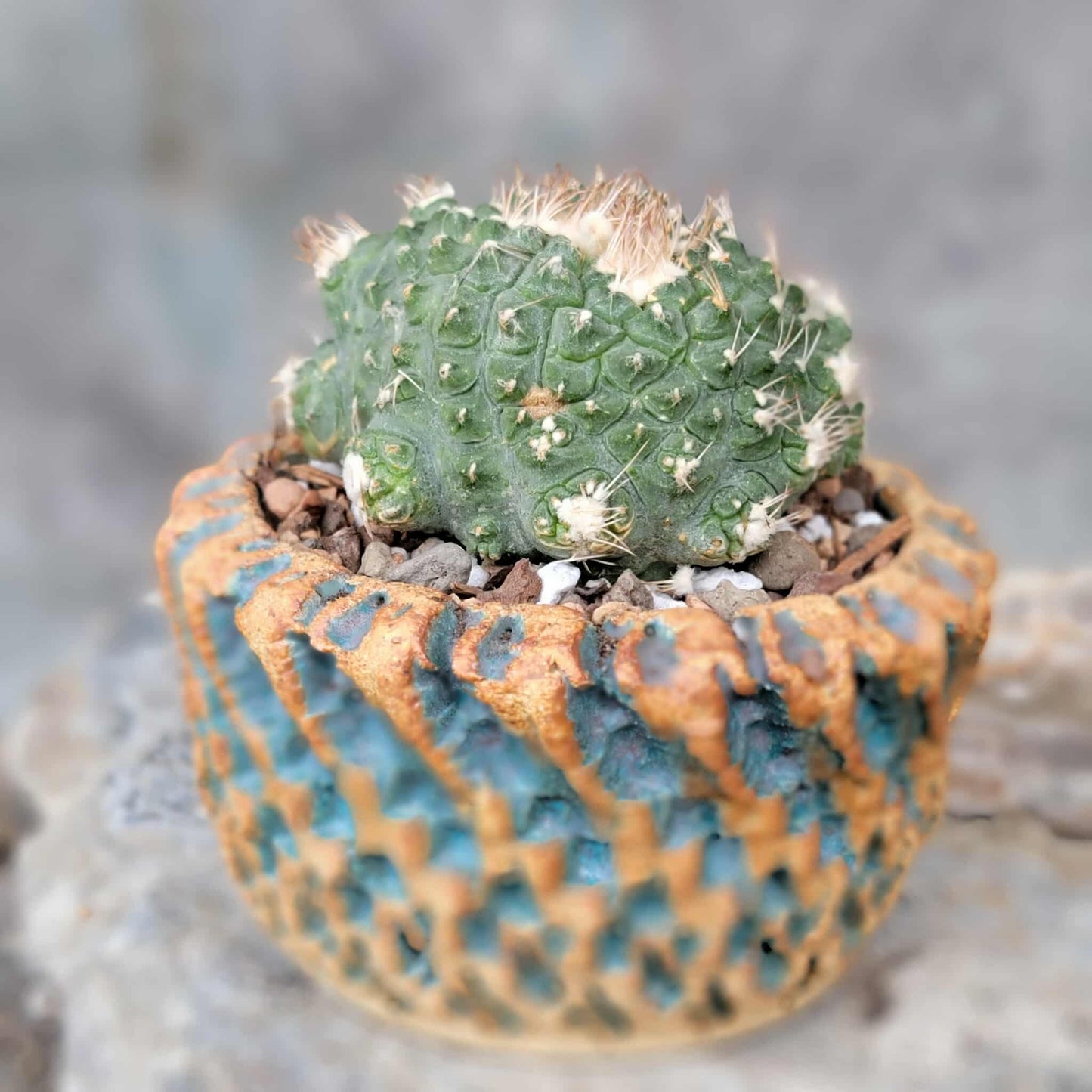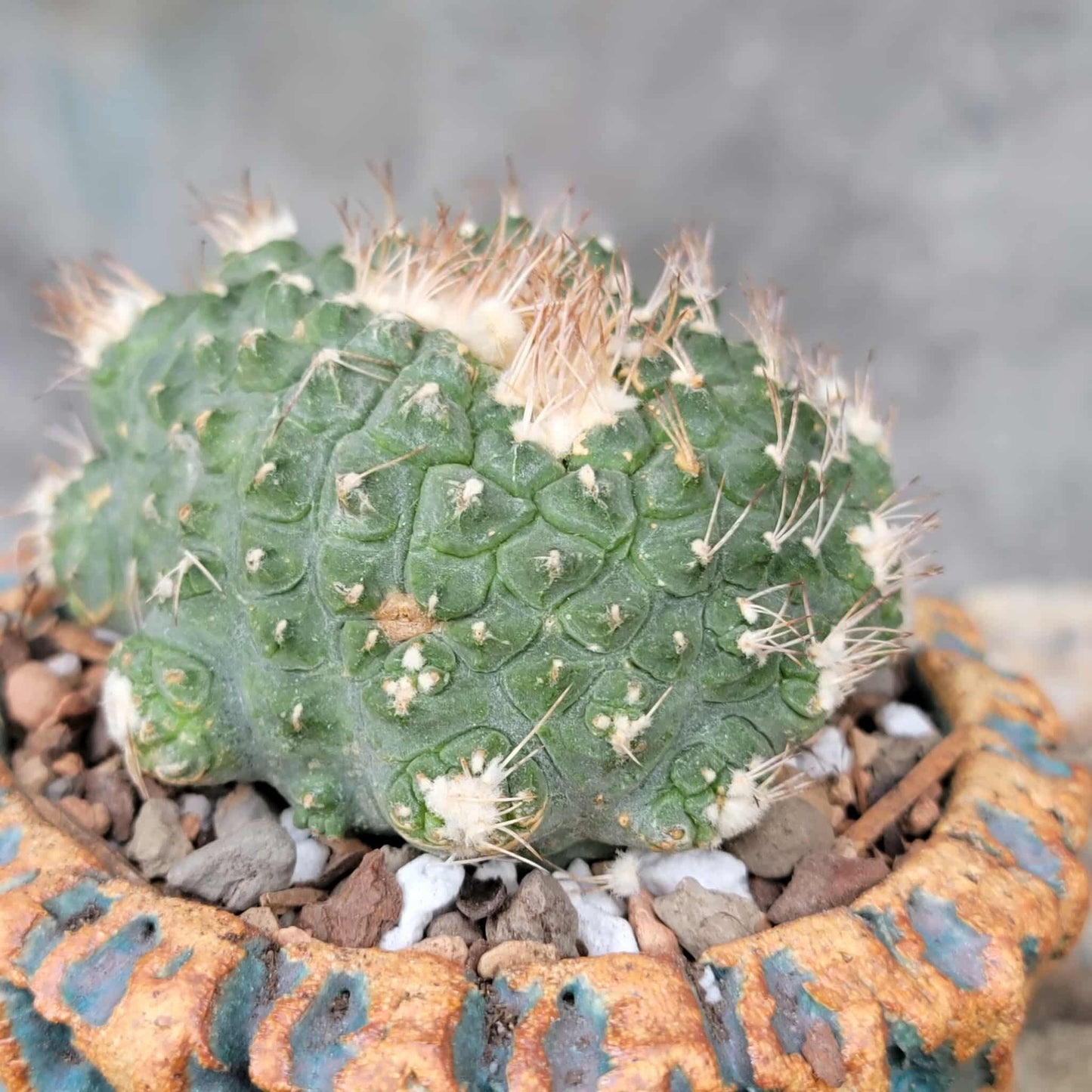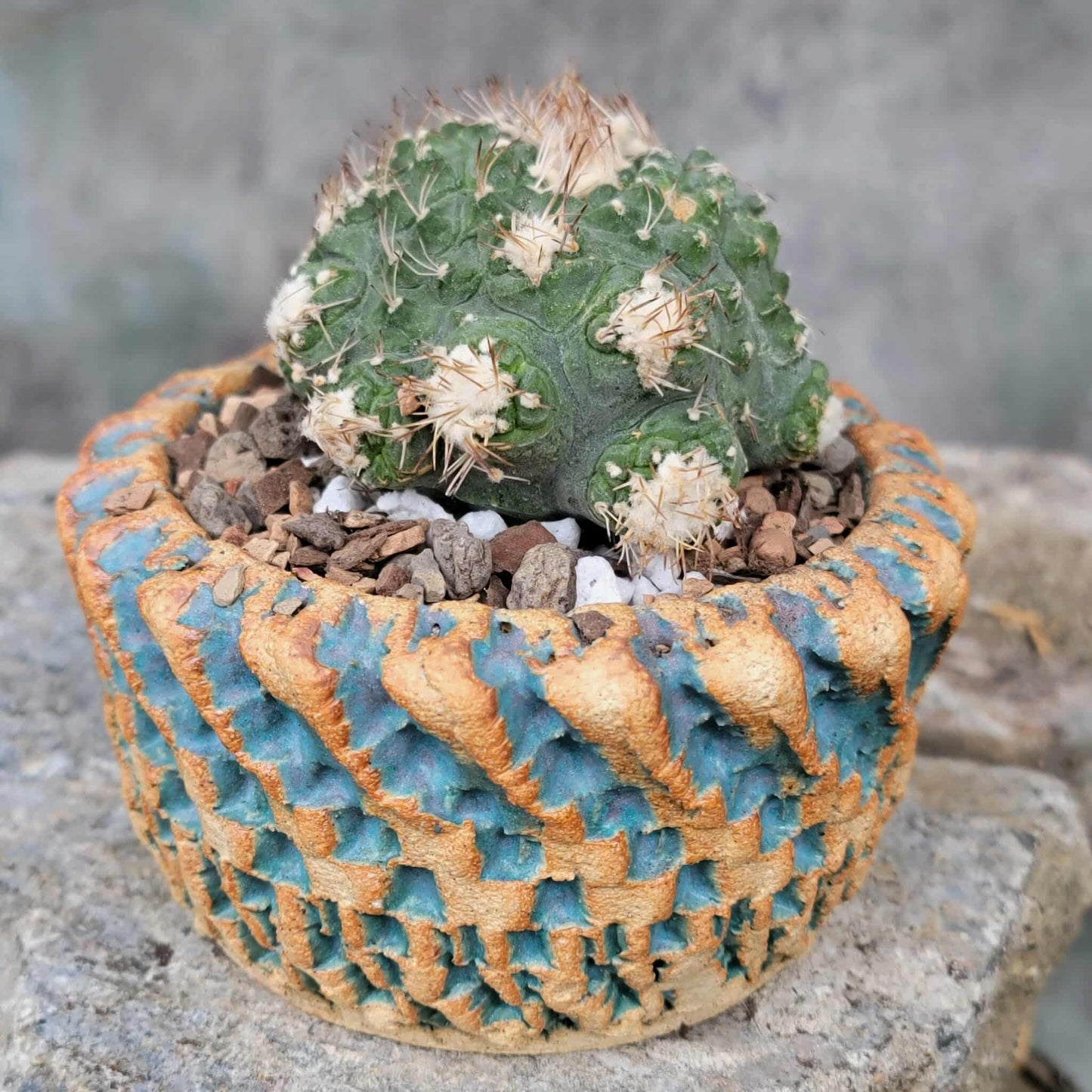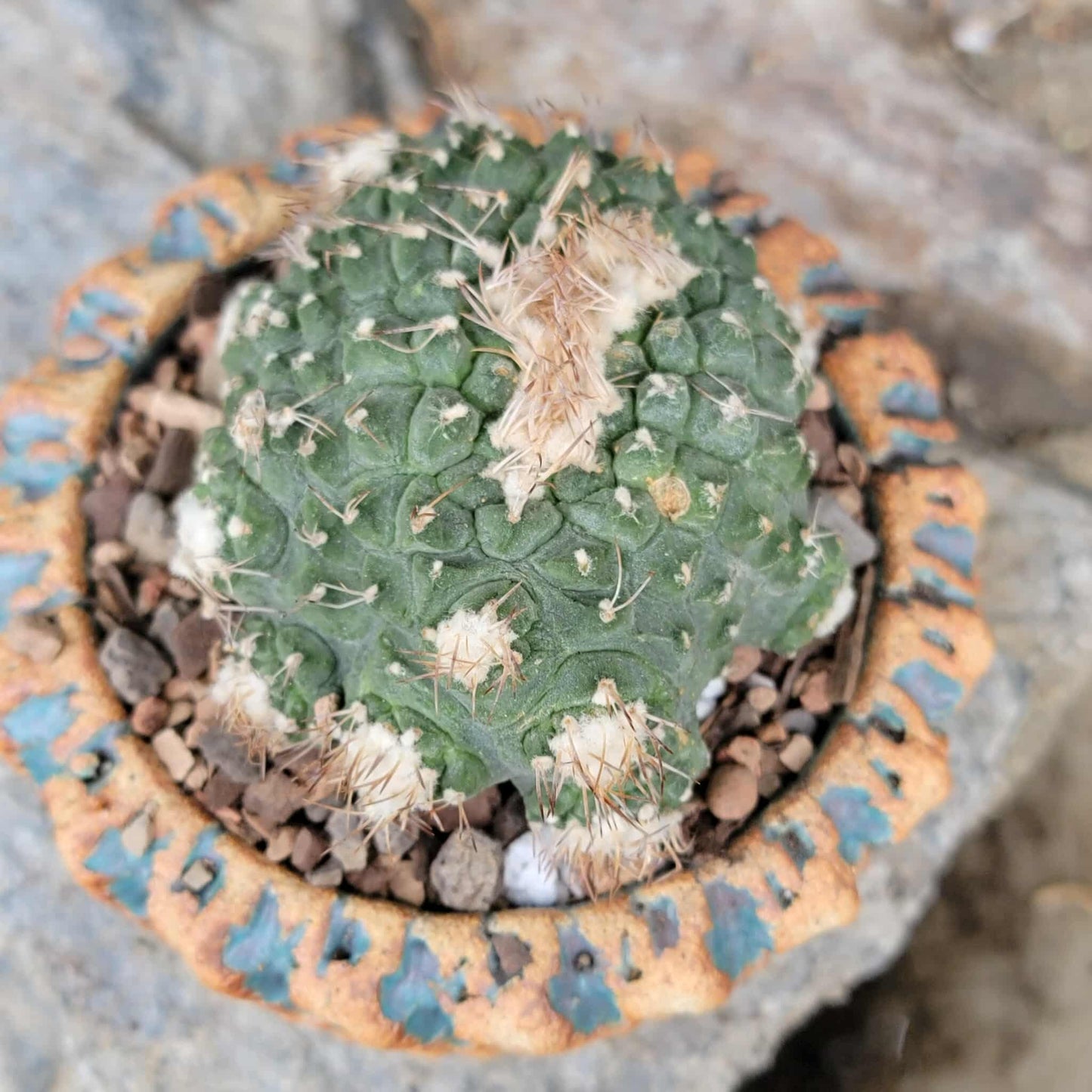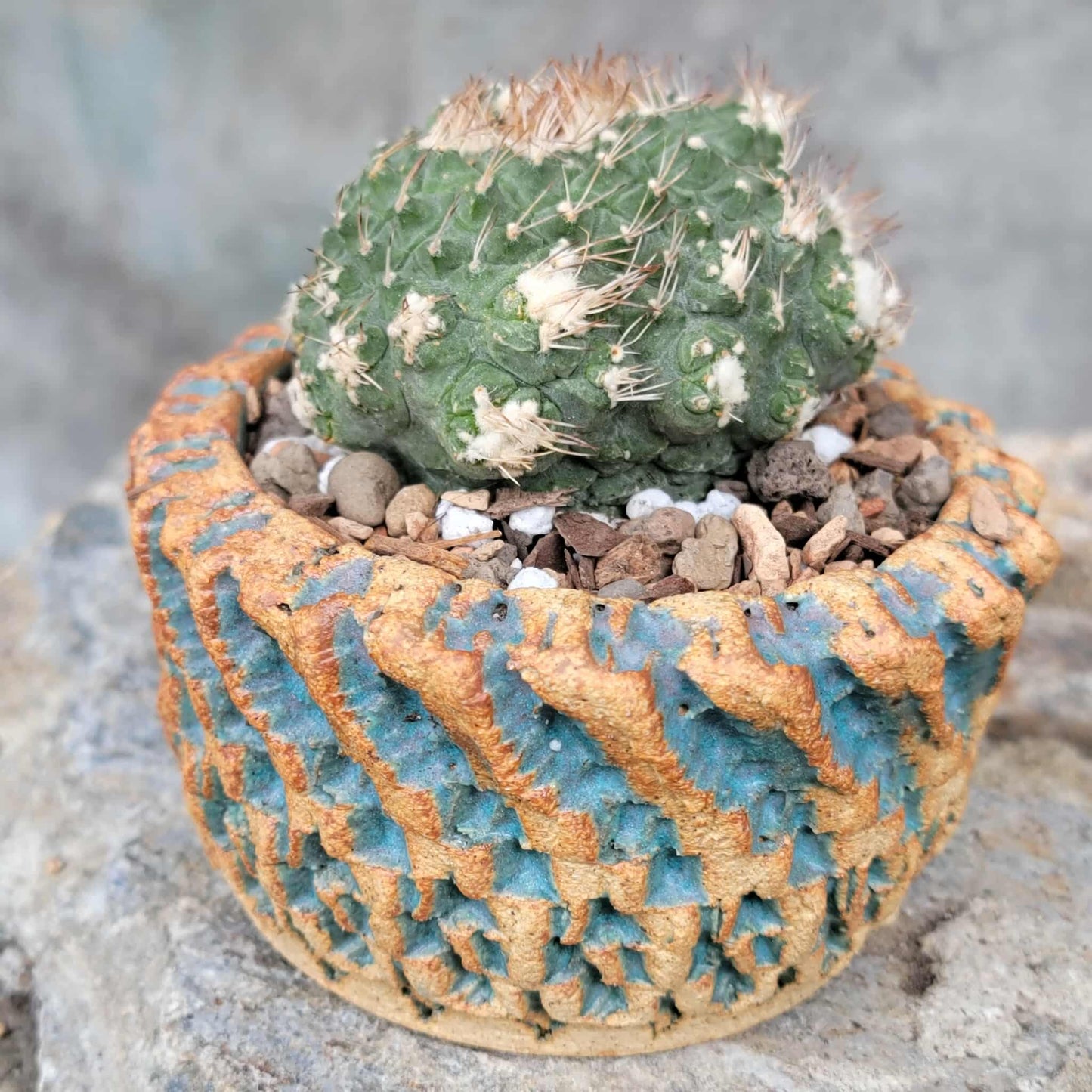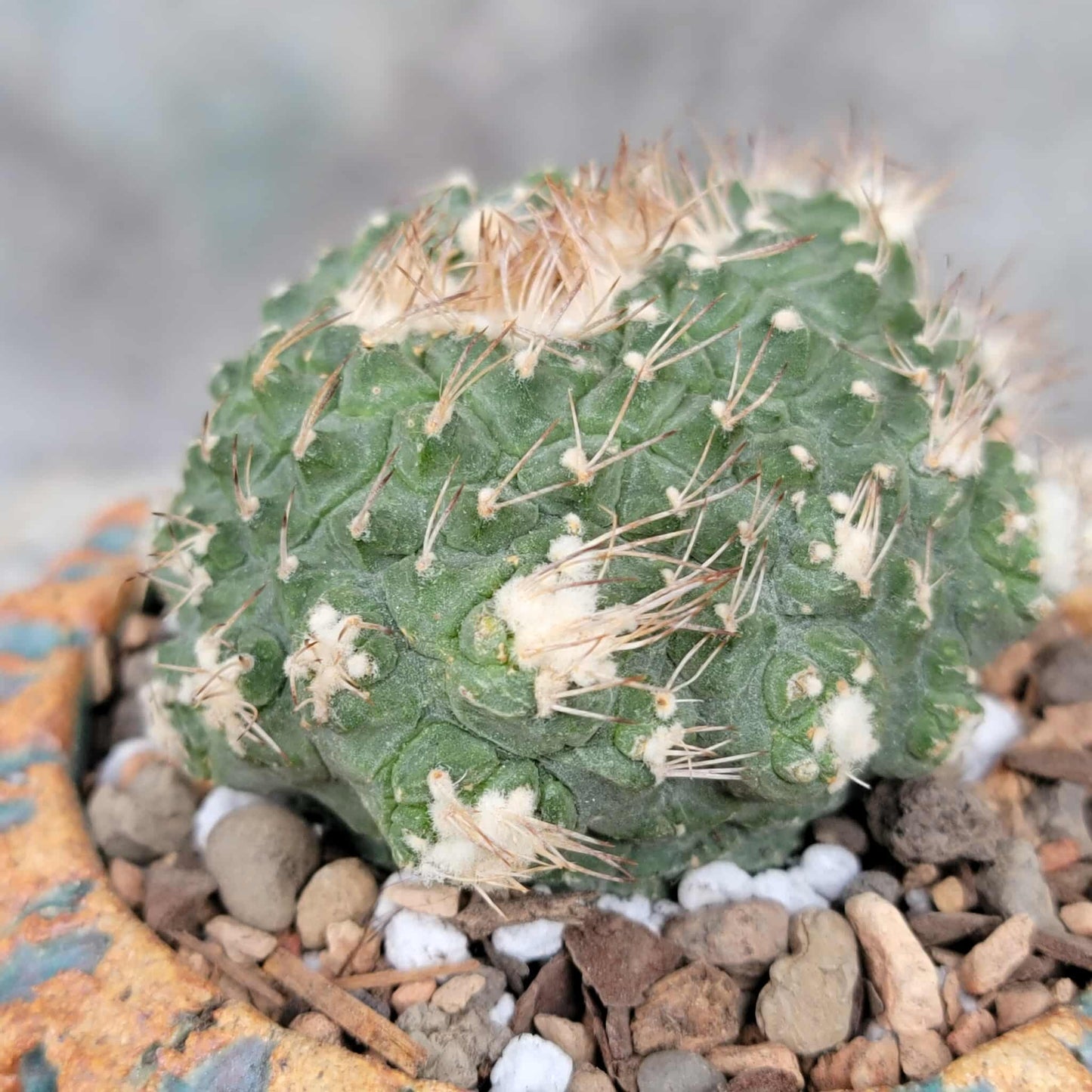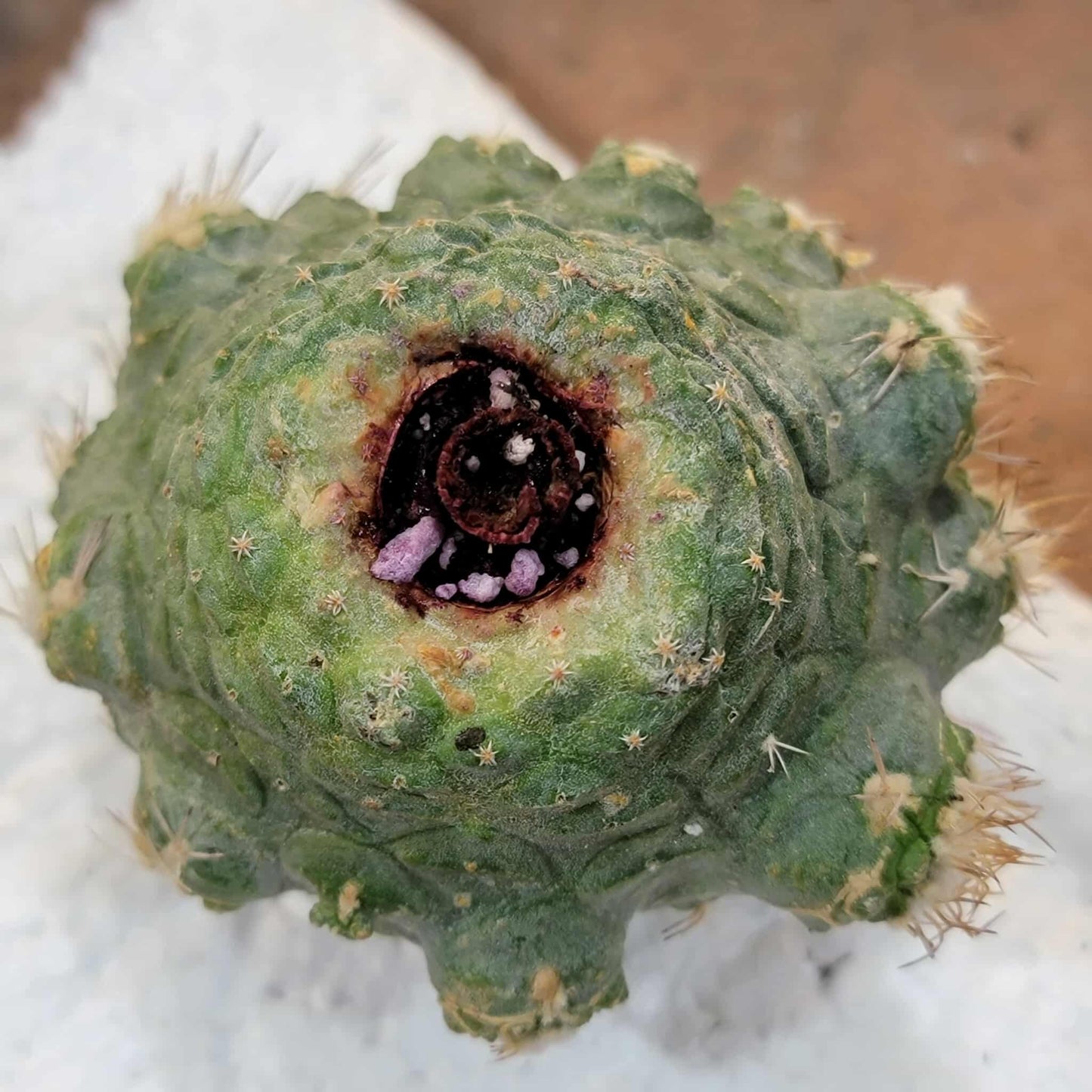Shangri-Ha Cactus Ranch
Strombocactus disciformis f. cristata
Strombocactus disciformis f. cristata
Couldn't load pickup availability
Strombocactus disciformis f. cristata
You will receive this exact specimen.
Measures 3" wide.
This is a degraft. Roots as shown.
Showcased here in one-of-a-kind handmade pottery (sold separately).
Will be shipped bare root.
Strombocactus disciformis is a rare and unique species of cactus native to Mexico, specifically the states of Querétaro, Hidalgo, and Guanajuato. It is the only species in the genus Strombocactus.
Characteristics
· Appearance: These cacti have a distinctive appearance, with a small, flattened, disc-shaped or roughly spherical stem covered with spirally arranged, overlapping tubercles. The stems are typically blue-green with a grayish tinge. In their natural habitat, they are often half-hidden in the ground, resembling small pine cones.
· Roots: Strombocactus disciformis possesses a strong, turnip-like taproot that allows it to store water and survive in arid conditions.
· Size: These are miniature plants, reaching a height of 2-3 cm and a diameter of 8 cm in their natural habitat, growing slightly larger in cultivation.
· Spines: The areoles on the tubercles bear short, bristly spines that typically fall off after a few years.
· Flowers: Strombocactus disciformis produces cream-colored flowers. A subspecies, Strombocactus disciformis ssp. esperanzae, has bright pink flowers. The flowers emerge from the crown of the plant and are 2.5 to 3.5 cm long, opening to about 4 cm in diameter.
· Growth rate: This species is known for its exceptionally slow growth rate. It can take 8 to 10 years to reach flowering size when grown from seed. For this reason, it is sometimes found grafted onto other cacti to accelerate growth.
Habitat and growing conditions
· Native habitat: Strombocactus disciformis is found growing on nearly vertical, weathered limestone rocks at altitudes of 1000 to 1600 meters in Central Mexico.
· Light: Requires plenty of bright, direct sunlight, at least four hours daily. A south-facing window is ideal indoors, or a sunny spot in a greenhouse. If enough natural sunlight is unavailable, a full-spectrum LED grow light can be used.
· Soil: A well-draining, gritty, and sandy cactus soil mix is essential. A mix of loam, sharp horticultural sand, and grit or pumice provides good drainage.
· Watering: Needs occasional watering, allowing the soil to dry out completely between waterings. Overwatering, especially during the colder months, can lead to root rot. Watering should be suspended during winter dormancy..
· Temperature: Tolerates high summer temperatures with good ventilation but needs protection from frost. The ideal minimum winter temperature is 5 degrees Celsius (41°F).
· Repotting: Repotting is best done during the growing season (spring or summer), and only into a pot one size larger to accommodate the taproot. Repot every two or three years in spring or early winter.
· Fertilizing: Benefits from a succulent-specific fertilizer during the growing season, applied at half strength monthly. Reduce feeding to bi-monthly during dormancy. Use a low-nitrogen, high-potassium feed for flowering. Water thoroughly after fertilizing to prevent root damage.
